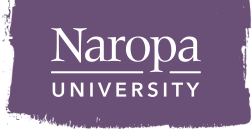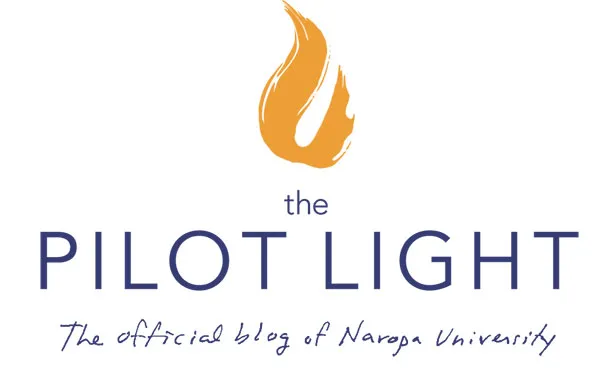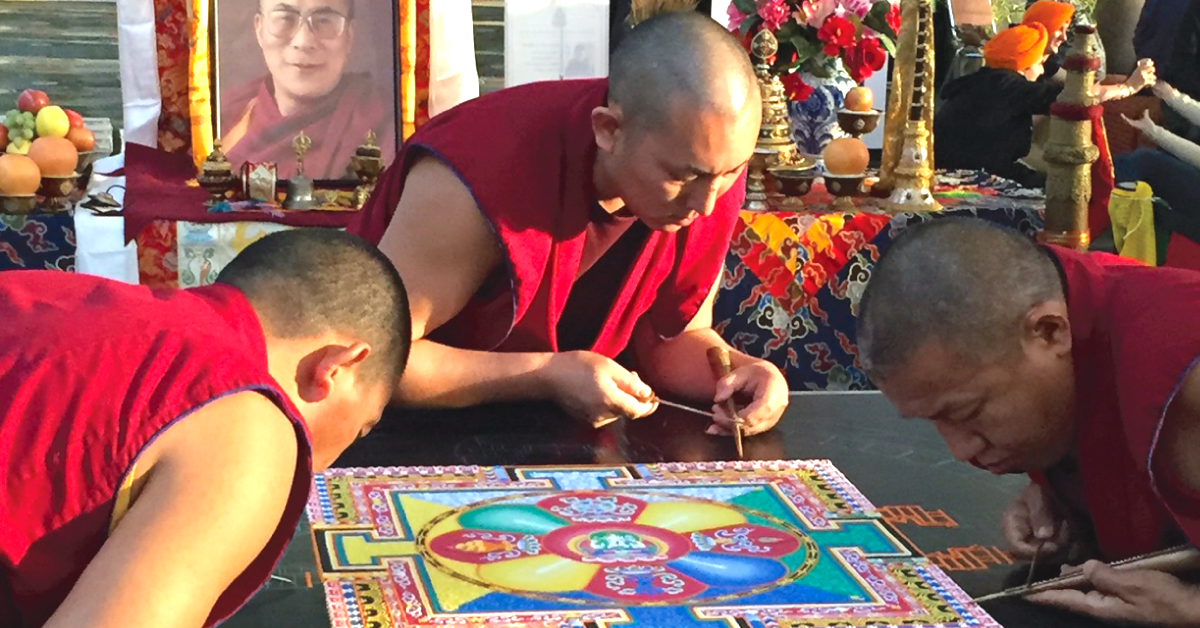
By Peggy Anderson, MA Religious Studies Student
A feisty grandmother and Maori elder with an indomitable character that stood much taller than her diminutive frame, took the stage at the Women’s Assembly, and declared “We are all one, whether we like it or not!”[1] As one of the women elders sharing wisdom from their indigenous tribes, Grandmother Dr. Rangimarie Turuki Rose Pere stressed that we are one circle, one tribe, one people, and that we are all indigenous to the earth. There was a sense from these elders that nothing is going to separate us from being one so we better figure out how to get along in peace so that our legacy is not a ruined culture and a destroyed planet.
If one wanted to envision what this world peace would look like, attending the 2015 Parliament of the World Religions in Salt Lake City was an experience of this hoped-for possibility. The largest interfaith gathering in the world met October 2015 to celebrate the diversity of the world’s religions, and discuss global concerns related to minority rights, climate change, war and violence. 10,000 attendees representing more than 50 religions from 80 nations shared their faith traditions.
As a field trip requirement for the Inter-religious Dialogue class at Naropa, my class, and our professor, Dr. Judith Simmer-Brown attended the Parliament together. Each day we chose among worship services, plenaries, panel discussions and workshops; journaling on what we learned from each. We browsed the marketplace, exhibit halls, and found time to dialogue with someone about their religious practice or tradition. Class preparation ahead of time, learning about religious identity and diversity, how to hold a place for another in dialogue, and the history of past parliaments allowed us to experience this phenomenal event with discerning minds and open hearts.
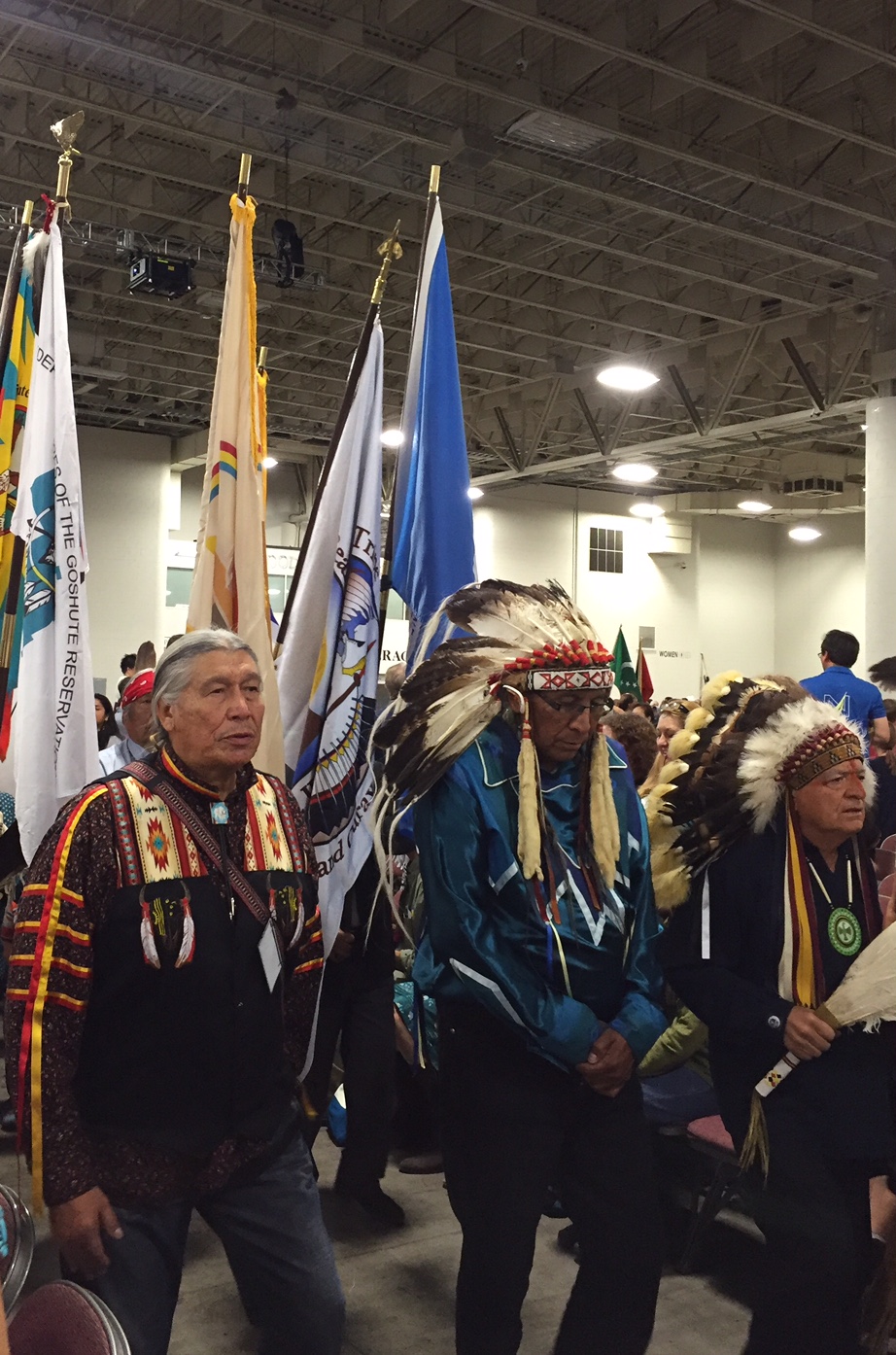 Over the course of five days, the Parliament hosted film festivals, cultural exhibits, a marketplace, sacred spaces, religious observances and more than 500 educational sessions, generating an abundance of creativity, wisdom and inspiration. It was a privilege to attend plenaries on critical issues from such notable speakers as Dr. Karen Armstrong, Sheikh Saleh Abdullah Bin Humaid, Mairead Corrigan-McGuire, Chief Arvol Lookinghorse, Rabbi David Sapperstein, The Venerable Dharma Master Hsin Tao, Dr. Jane Goodall, Dr. Tariq Ramadan, Dr. Eboo Patel and Dr. Vandana Shiva.
Over the course of five days, the Parliament hosted film festivals, cultural exhibits, a marketplace, sacred spaces, religious observances and more than 500 educational sessions, generating an abundance of creativity, wisdom and inspiration. It was a privilege to attend plenaries on critical issues from such notable speakers as Dr. Karen Armstrong, Sheikh Saleh Abdullah Bin Humaid, Mairead Corrigan-McGuire, Chief Arvol Lookinghorse, Rabbi David Sapperstein, The Venerable Dharma Master Hsin Tao, Dr. Jane Goodall, Dr. Tariq Ramadan, Dr. Eboo Patel and Dr. Vandana Shiva.
Every day for lunch, the Sikh communities showed their amazing hospitality by continuing the tradition of Langar—“open kitchen”—serving a vegetarian lunch free for the attendees at the Parliament.
On Sunday evening, the Mormon Tabernacle was filled to capacity with participants for the Sacred Music Night, which included an Islamic Call to Prayer, Whirling Dervishes, the Burundi Drummers, the International Baha’i Choir to name just a few. There was much to appreciate in the poetry, dance and song of so many faith celebrations.
How could one enjoy the warmth, friendship and celebration of these world religions though, and remain indifferent to the Parliament’s focus on the suffering of humanity, or the devastation of our earth? In the plenary on war, violence and hate speech, and the panel on street violence, Dr. Tariq Ramadan spoke to the need for standing up for peace; and that peace must not be an emotional thing, but a spiritual thing. He counseled us to not look for a simplistic answer to a complex problem. What is required of religion today is to nurture a profound sense of discomfort, and to take suffering into our hearts.
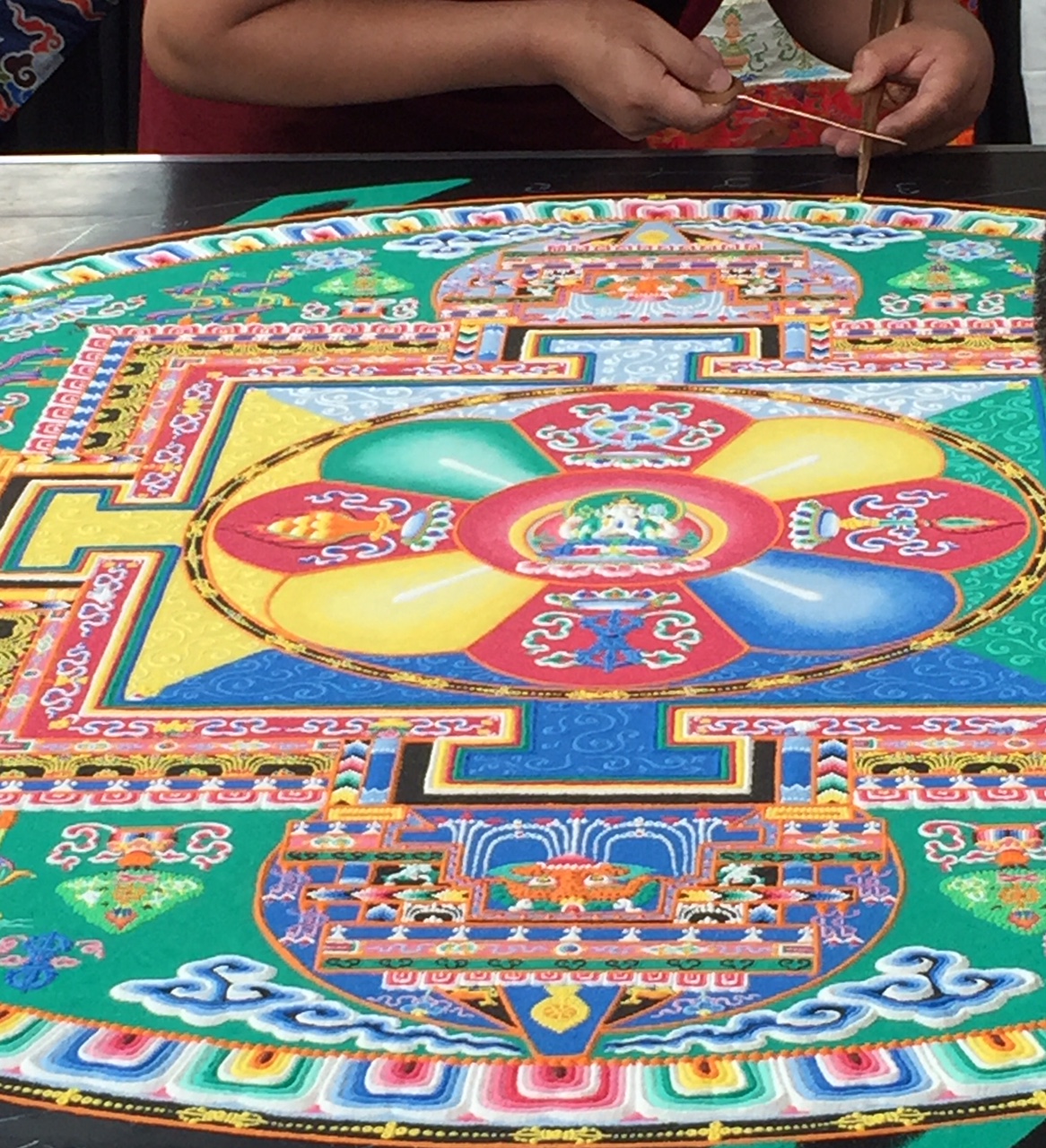 As I watched the Tibetan Buddhist monks from Drepung Loseling Monastery meticulously place the colored sands into the sand mandala they were constructing in the marketplace, I wondered about the number of grains of sand needed to build this beautiful creation. Would it number more than all of humanity? Maybe the sands numbered all of creation living on the earth? Reflecting on the mandala, an image for world peace, reminded me that as these individual grains of colored sand add to the beauty of the whole mandala, so each of our efforts, however small, is essential to “reclaiming the heart of our humanity.”[2]
As I watched the Tibetan Buddhist monks from Drepung Loseling Monastery meticulously place the colored sands into the sand mandala they were constructing in the marketplace, I wondered about the number of grains of sand needed to build this beautiful creation. Would it number more than all of humanity? Maybe the sands numbered all of creation living on the earth? Reflecting on the mandala, an image for world peace, reminded me that as these individual grains of colored sand add to the beauty of the whole mandala, so each of our efforts, however small, is essential to “reclaiming the heart of our humanity.”[2]
In a presentation on the saving of our earth, panelists described their various interfaith approaches to working with the environment. One member of the audience mentioned that she had a difficult time finding a meeting ground for conversation with a neighbor because of her neighbor’s fundamentalist beliefs. However, meeting this neighbor on a walk through the woods behind her house, the neighbor remarked that she thought the trees have souls. Maybe this story points to the possibility of spirituality becoming a meeting ground beyond religious belief. Jean Shinoda Bolen in her presentation in the Women’s Assembly said, “Spirituality unites us, religions define us.”[3]
Remembering Grandmother Rose’s comment about one tribe-one people, it seemed that we could be considered a single organism on the body of mother earth. None of us survive if she doesn’t. Poverty, inequality, and economic conditions seem to contribute to the suffering of humanity more than religious difference. Dr. Judith Simmer-Brown, a presenter in the panel discussion on Christians, Jews and Buddhists in Dialogue, said, “I wonder what difference the differences make.”[4] Maybe in the larger picture of the survival of our lives on this planet, not much.
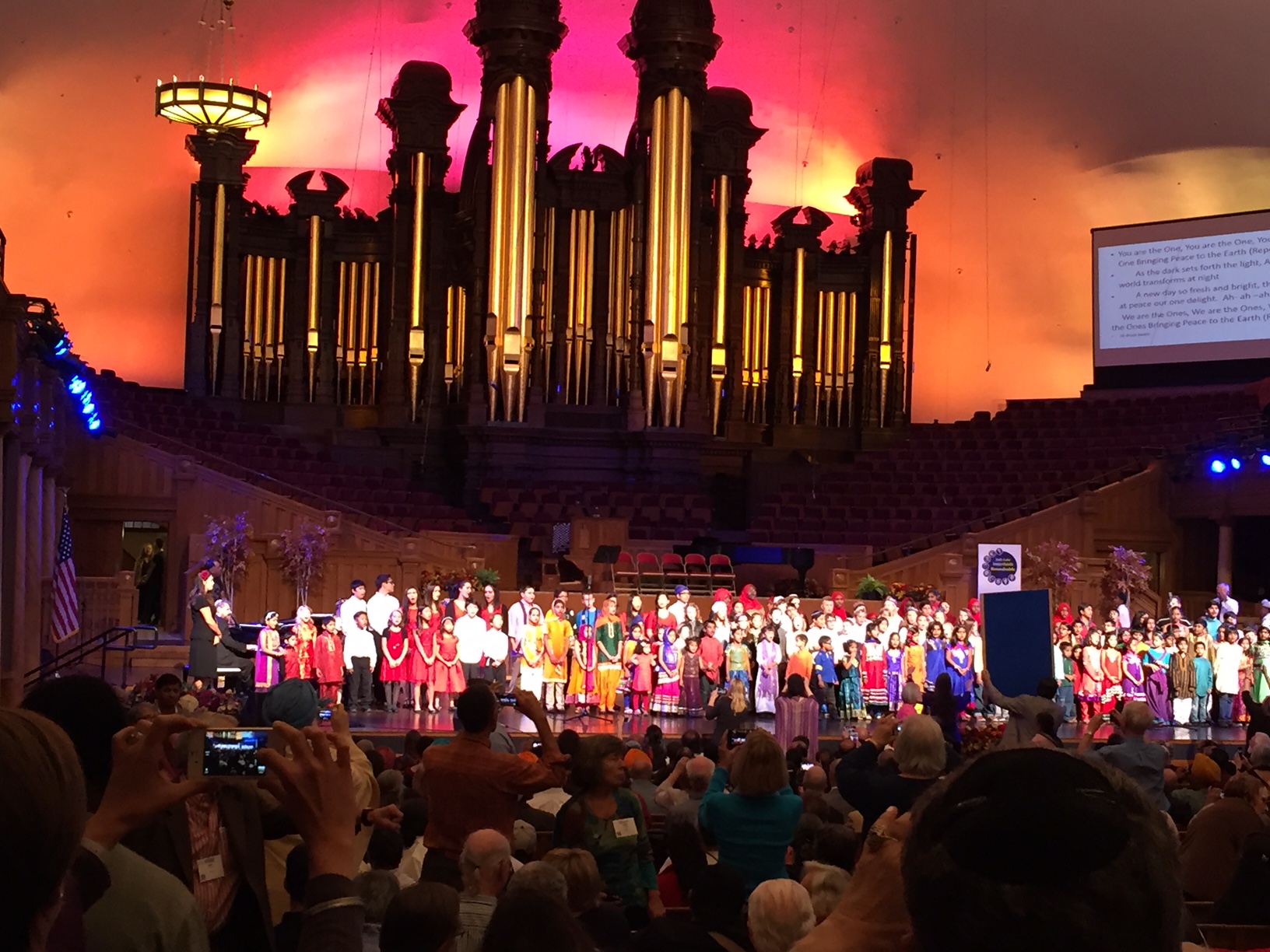
[1] Turuki Rose Pere, Dr. Rangimarie. “Women’s Assembly Major Speaker Session I.” Lecture, 2015 Parliament of World Religions, Salt Palace, Salt Lake City, October 15, 2015.
[2] “Parliament Theme.” 2015 Parliament of the World’s Religions Conference Program. Salt Lake City, 2015, 26.
[3] Shinoda Bolen, Jean. “Women’s Assembly Major Speaker Session I.” Lecture, 2015 Parliament of World Religions, Salt Palace, Salt Lake City, October 15, 2015.
[4] Simmer-Brown, Judith. “Transforming Encounters: Christians, Jews and Buddhists in Dialogue in the U.S.” Lecture, 2015 Parliament of World Religions, Salt Palace, Salt Lake City, October 18, 2015.
